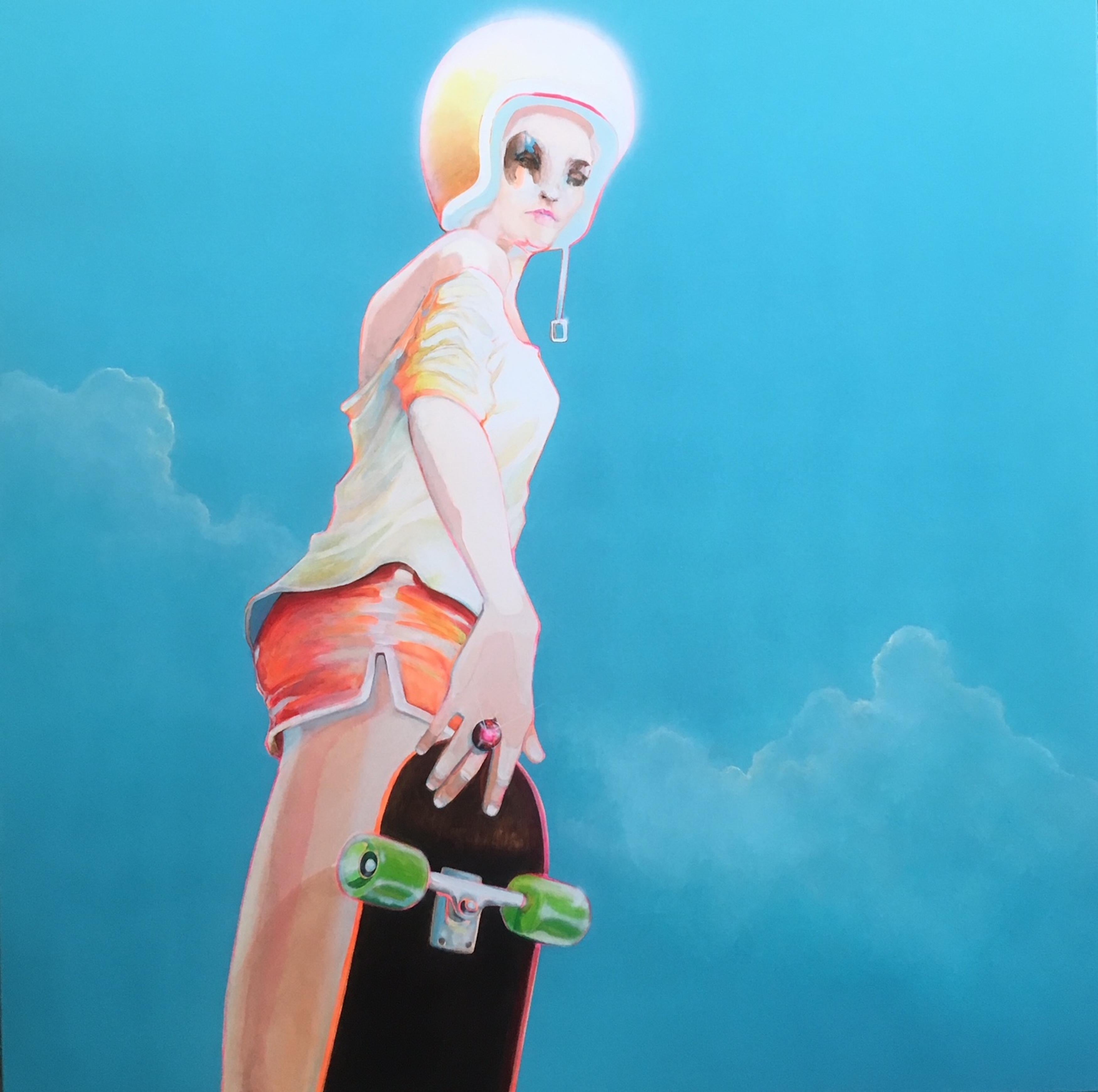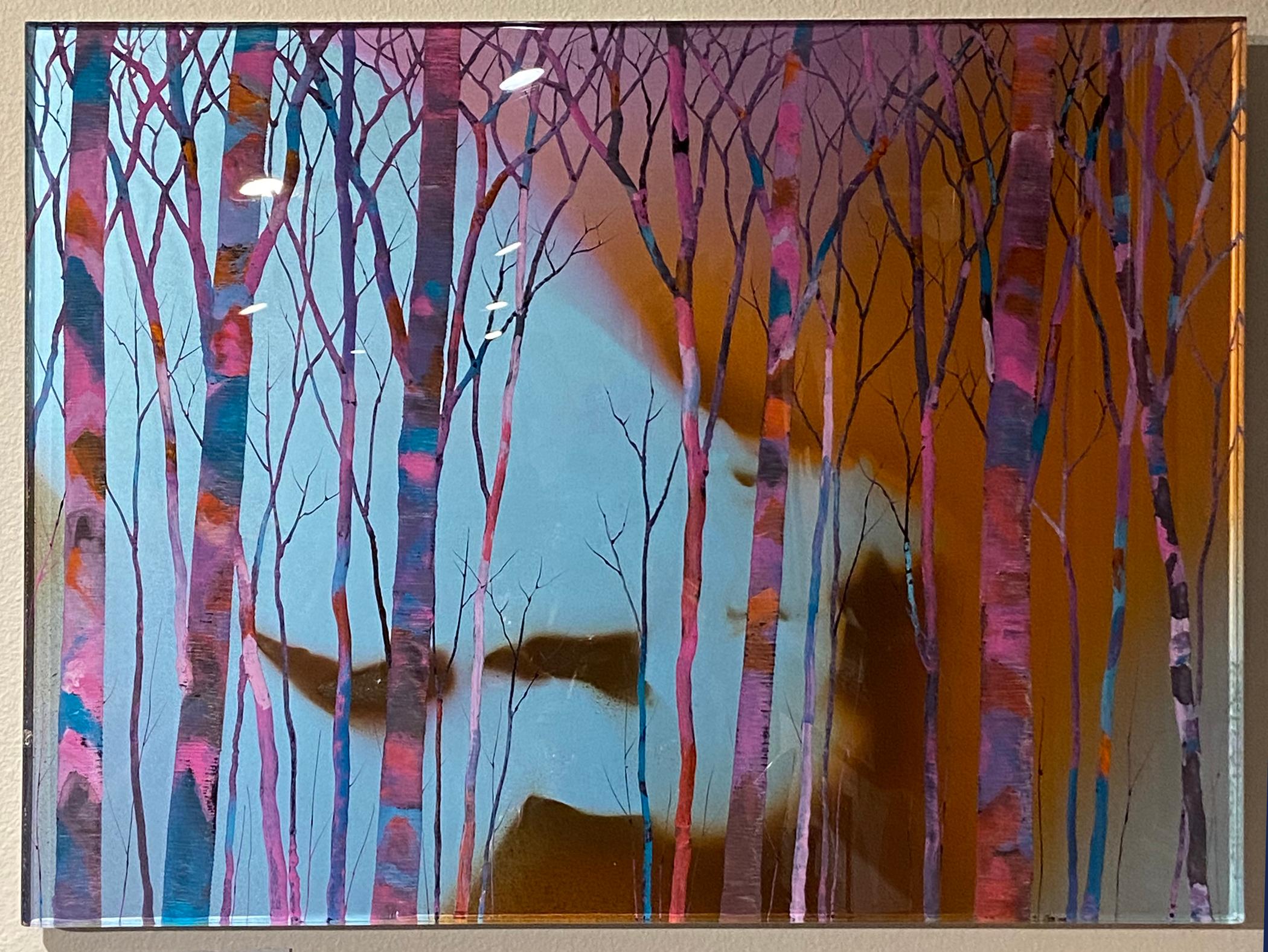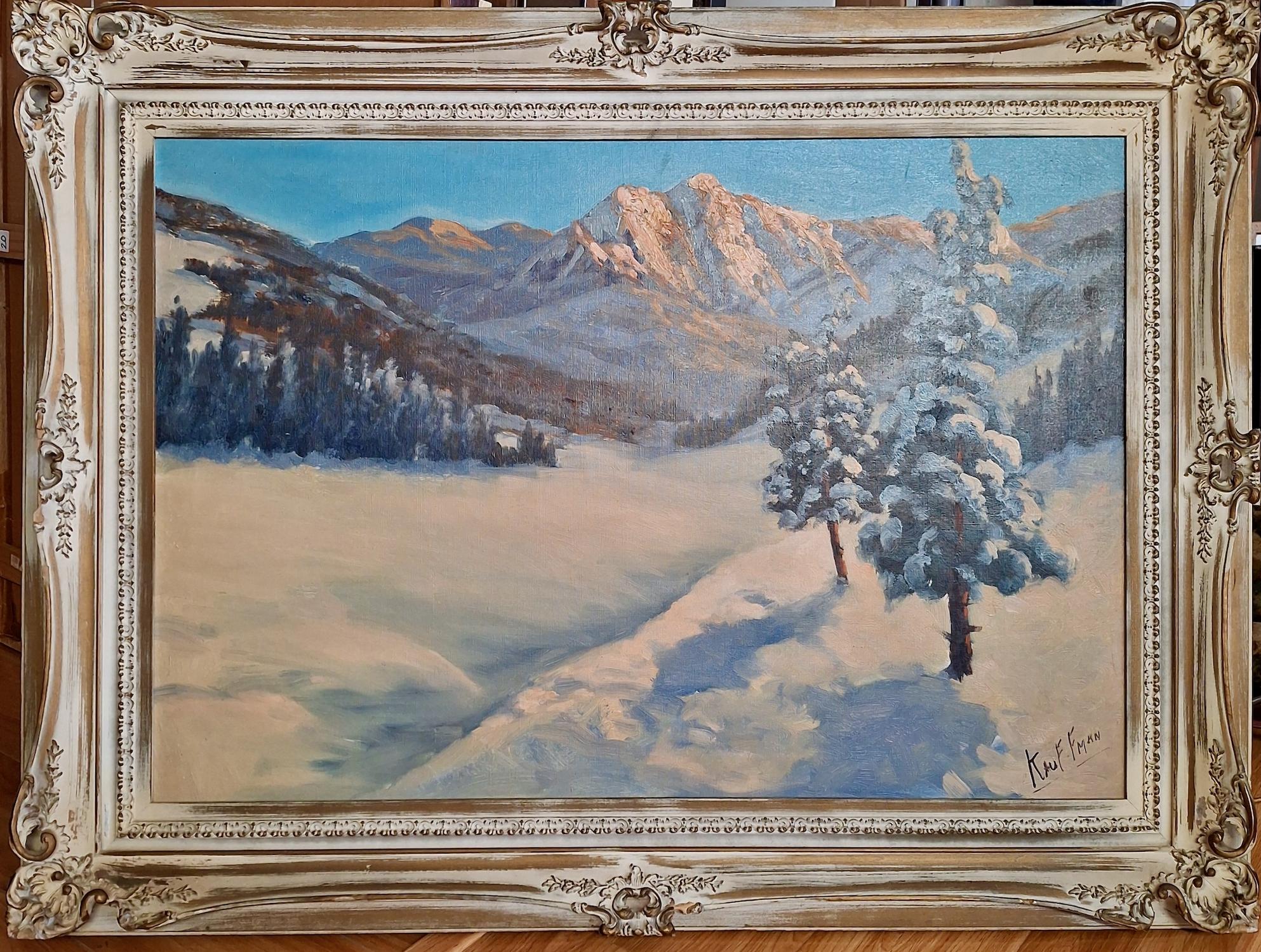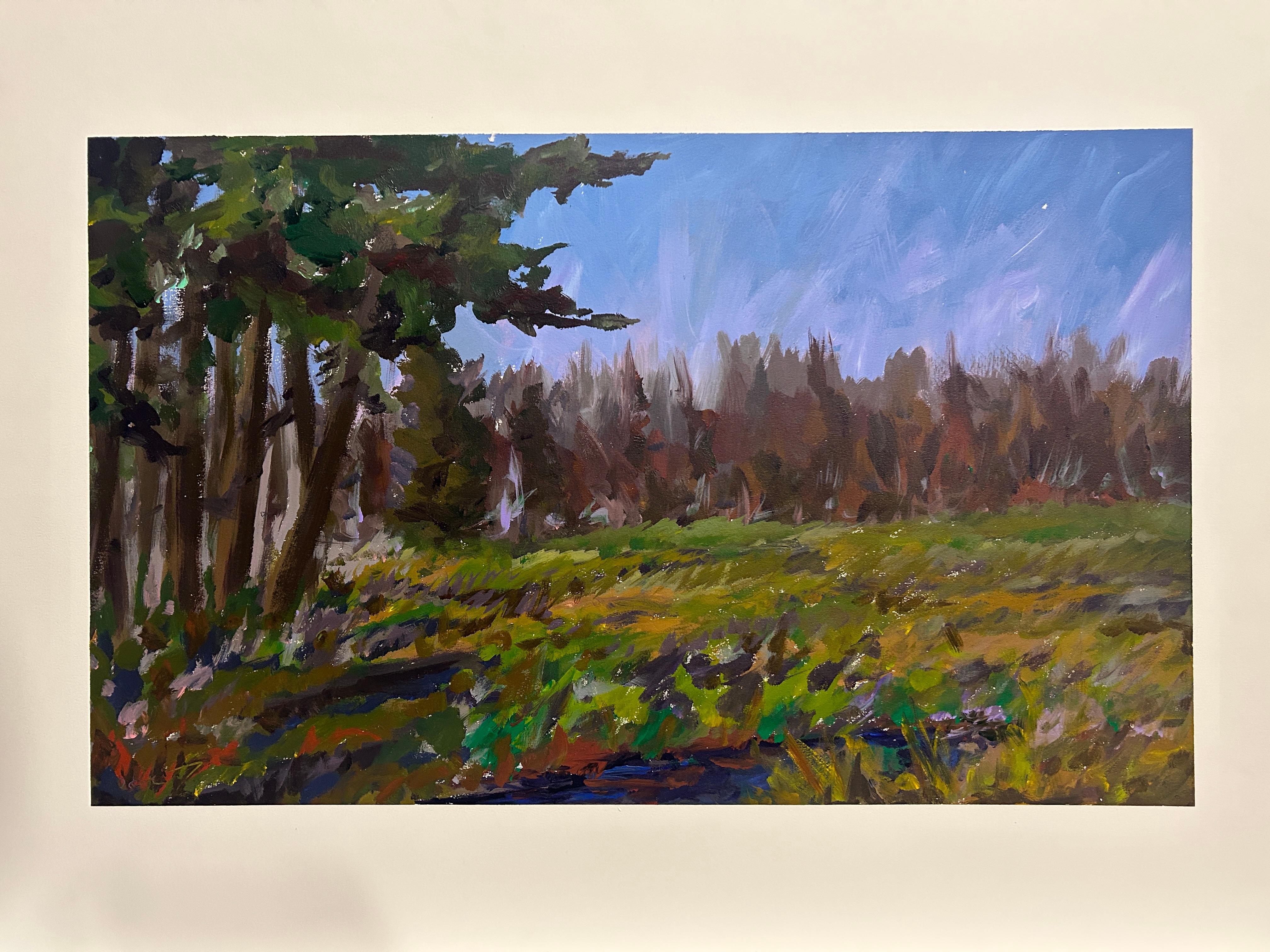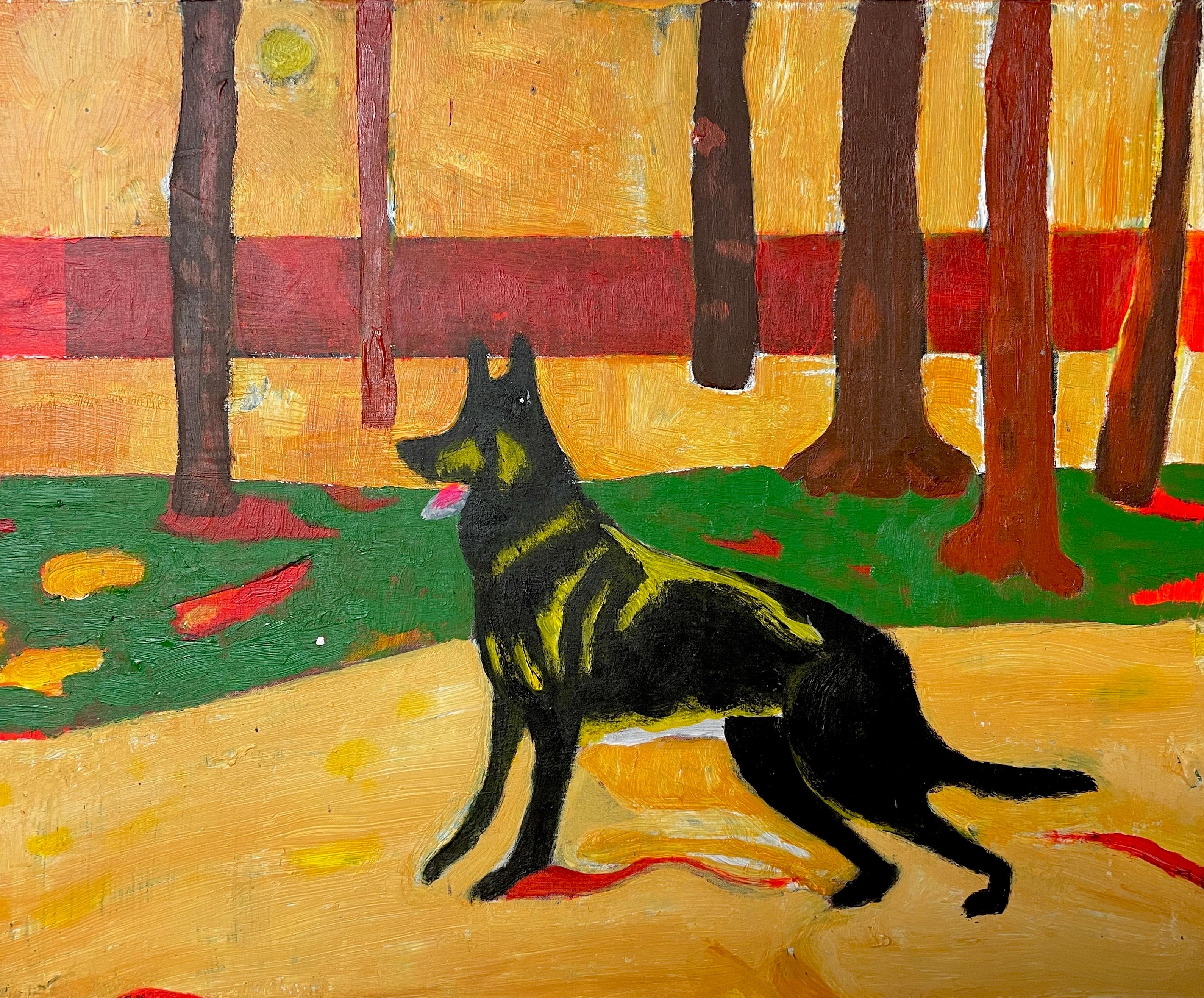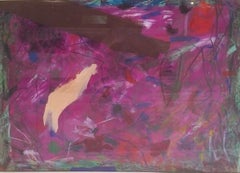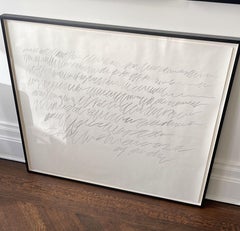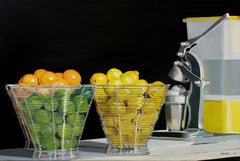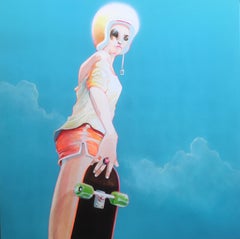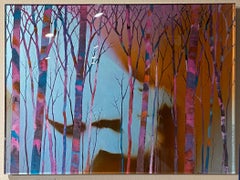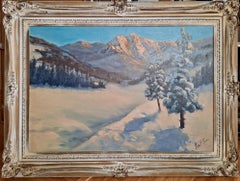Want more images or videos?
Request additional images or videos from the seller
1 of 11
Joe McMackinCanadian Snowboarder2009
2009
$1,320
$1,65020% Off
£1,002.76
£1,253.4420% Off
€1,155.01
€1,443.7720% Off
CA$1,888.39
CA$2,360.4920% Off
A$2,071.07
A$2,588.8320% Off
CHF 1,068.14
CHF 1,335.1720% Off
MX$24,740.64
MX$30,925.8020% Off
NOK 13,547.21
NOK 16,934.0120% Off
SEK 12,708.82
SEK 15,886.0220% Off
DKK 8,628.81
DKK 10,786.0120% Off
About the Item
This is not one of McMackin's widely available reproductions. This is the actual oil painting of the Canadian Snowboarder. Arrives framed. One cannot appreciate this beautiful painting on a computer screen. In real life, it is fantastic.
Snowboarding is a recreational and competitive activity that involves descending a snow-covered surface while standing on a snowboard that is almost always attached to a rider's feet. It features in the Winter Olympic Games and Winter Paralympic Games.
Snowboarding was developed in the United States, inspired by skateboarding, sledding, surfing, and skiing. It became popular around the world, and was introduced as a Winter Olympic Sport at Nagano in 1991 and featured in the Winter Paralympics at Sochi in 2014.2 As of 2015, its popularity (as measured by equipment sales) in the United States peaked in 2007 and has been in a decline since.
The first snowboards were developed in 1965 when Sherman Poppen, an engineer in Muskegon, Michigan, invented a toy for his daughters by fastening two skis together and attaching a rope to one end so he would have some control as they stood on the board and glided downhill. Dubbed the "snurfer" (combining snow and surfer) by his wife Nancy, the toy proved so popular among his daughters' friends that Poppen licensed the idea to a manufacturer, Brunswick Corporation, that sold about a million snurfers over the next decade.5 And, in 1966 alone, over half a million snurfers were sold.
Modern snowboarding was pioneered by Tom Sims and Jake Burton Carpenter, who both contributed significant innovations and started influential companies. In February 1968, Poppen organized the first snurfing competition at a Michigan ski resort that attracted enthusiasts from all over the country.7 One of those early pioneers was Tom Sims, a devotee of skateboarding (a sport born in the 1950s when kids attached roller skate wheels to small boards that they steered by shifting their weight). In the 1960s, as an eighth grader in Haddonfield, New Jersey, Sims crafted a snowboard in his school shop class by gluing carpet to the top of a piece of wood and attaching aluminum sheeting to the bottom.8 He produced commercial snowboards in the mid-70s.9 Others experimented with board-on-snow configurations at this time, including Welsh skateboard enthusiasts Jon Roberts and Pete Matthews developed their own snowboards to use at their local dry ski slope.
Also during this same period, in 1977, Jake Burton Carpenter, a Vermont native who had enjoyed snurfing since the age of 14, impressed the crowd at a Michigan snurfing competition with bindings he had designed to secure his feet to the board. That same year, he founded Burton Snowboards in Londonderry, Vermont.12 The "snowboards" were made of wooden planks that were flexible and had water ski foot traps. Very few people picked up snowboarding because the price of the board was considered too high at $38 and were not allowed on many ski hills, but eventually Burton would become the biggest snowboarding company in the business.13 Burton's early designs for boards with bindings became the dominant features in snowboarding.
The first competitions to offer prize money were the National Snurfing Championship, held at Muskegon State Park in Muskegon, Michigan.14 In 1979, Jake Burton Carpenter came from Vermont to compete with a snowboard of his own design. There were protests about Jake entering with a non-snurfer board. Paul Graves, and others, advocated that Jake be allowed to race. A "modified" "Open" division was created and won by Jake as the sole entrant. That race was considered the first competition for snowboards and is the start of what became competitive snowboarding. Ken Kampenga, John Asmussen and Jim Trim placed first, second and third respectively in the Standard competition with best two combined times of 24.71, 25.02 and 25.41; and Jake Carpenter won prize money as the sole entrant in the "open" division with a time of 26.35.15 In 1980 the event moved to Pando Winter Sports Park near Grand Rapids, Michigan because of a lack of snow that year at the original venue.
In the early 1980s, Aleksey Ostatnigrosh and Alexei Melnikov, two Snurfers from the Soviet Union, patented design changes to the Snurfer to allow jumping by attaching a bungee cord, a single footed binding to the Snurfer tail, and a two-foot binding design for improved control.
As snowboarding became more popular in the 1970s and 1980s, pioneers such as Dimitrije Milovich (founder of Winterstick out of Salt Lake City, UT), Jake Burton Carpenter (founder of Burton Snowboards from Londonderry, Vermont), Tom Sims (founder of Sims Snowboards), David Kemper (founder of Kemper Snowboards) and Mike Olson (founder of Gnu Snowboards) came up with new designs for boards and mechanisms that slowly developed into the snowboards and other related equipment. From these developments, modern snowboarding equipment usually consists of a snowboard with specialized bindings and boots.
In April 1981, the "King of the Mountain" Snowboard competition was held at Ski Cooper in Colorado.24 Tom Sims along with an assortment of other snowboarders of the time were present.25 One entrant showed up on a homemade snowboard with a formica bottom that turned out to not slide so well on the snow.
In 1982, the first USA National Snowboard race was held near Woodstock, Vermont, at Suicide Six. The race, organized by Graves, was won by Burton's first team rider Doug Bouton.
In 1983, the first World Championship halfpipe competition was held at Soda Springs, California. Tom Sims, founder of Sims Snowboards, organized the event with the help of Mike Chantry, a snowboard instructor at Soda Springs.
In 1985, the first World Cup was held in Zürs, Austria, further cementing snowboarding's recognition as an official international competitive sport.
In 1990, the International Snowboard Federation (ISF) was founded to provide universal contest regulations.29 In addition, the United States of America Snowboard Association (USASA) provides instructing guidelines and runs snowboard competitions in the U.S. today, high-profile snowboarding events like the Winter X Games, Air & Style, US Open, Olympic Games and other events are broadcast worldwide. Many alpine resorts have terrain parks.
At the 1998 Winter Olympic Games in Nagano, Japan, Snowboarding became an official Olympic event.30 France's Karine Ruby was the first ever to win an Olympic gold medal for Woman's Snowboarding at the 1998 Olympics, while Canadian Ross Rebagliati31 was the first ever to win an Olympic gold medal for Men's Snowboarding.
Initially, ski areas adopted the sport at a much slower pace than the winter sports public. Indeed, for many years, there was animosity between skiers and snowboarders, which led to an ongoing skier vs snowboarder feud.32 Early snowboards were banned from the slopes by park officials. For several years snowboarders would have to take a small skills assessment prior to being allowed to ride the chairlifts. It was thought that an unskilled snowboarder would wipe the snow off the mountain. In 1985, only seven percent of U.S. ski areas allowed snowboarding,33 with a similar proportion in Europe. As equipment and skills improved, gradually snowboarding became more accepted. In 1990, most major ski areas had separate slopes for snowboarders. Now, approximately 97% of all ski areas in North America and Europe allow snowboarding, and more than half have jumps, rails and half pipes.
In 2004, snowboarding had 6.6 million active participants.34 An industry spokesman said that "twelve year-olds are out-riding adults." The same article said that most snowboarders are 18–24 years old and that women constitute 25% of participants.
There were 8.2 million snowboarders in the US and Canada for the 2009–2010 season. There was a 10% increase over the previous season, accounting for more than 30% of all snow sports participants.
On 2 May 2012, the International Paralympic Committee announced that adaptive snowboarding (dubbed "para-snowboarding") would debut as a men's and women's medal event in the 2014 Paralympic Winter Games taking place in Sochi, Russia.
- Creator:Joe McMackin (1981, Canadian)
- Creation Year:2009
- Dimensions:Height: 18 in (45.72 cm)Width: 24 in (60.96 cm)
- More Editions & Sizes:NonePrice: $1,650
- Medium:
- Movement & Style:
- Period:
- Condition:There is a scratch on the bottom right of the frame. See all photos.
- Gallery Location:Boca Raton, FL
- Reference Number:1stDibs: LU50412609832
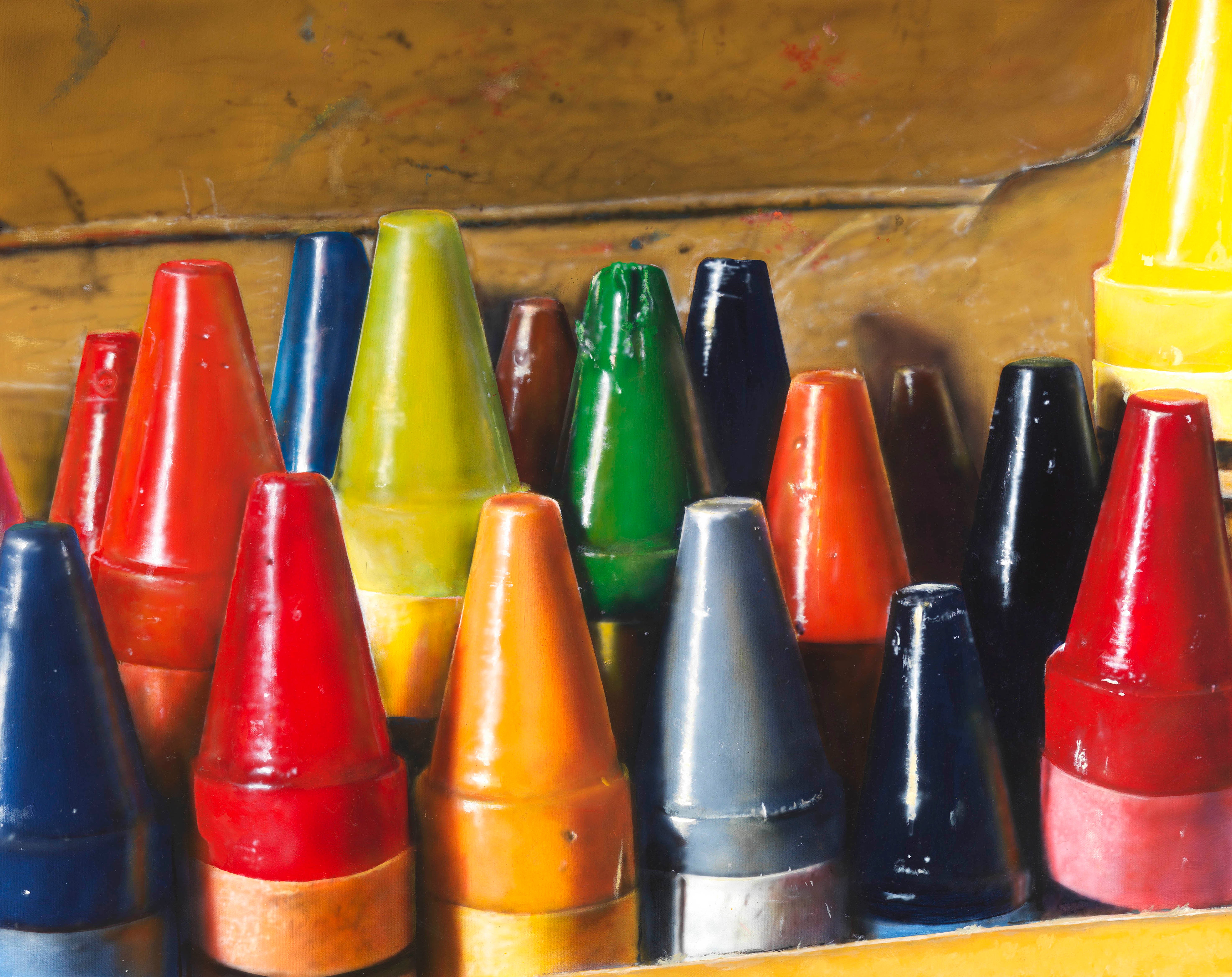
About the Seller
5.0
Vetted Professional Seller
Every seller passes strict standards for authenticity and reliability
Established in 1985
1stDibs seller since 2014
159 sales on 1stDibs
Typical response time: 4 hours
- ShippingRetrieving quote...Shipping from: Boca Raton, FL
- Return Policy
Authenticity Guarantee
In the unlikely event there’s an issue with an item’s authenticity, contact us within 1 year for a full refund. DetailsMoney-Back Guarantee
If your item is not as described, is damaged in transit, or does not arrive, contact us within 7 days for a full refund. Details24-Hour Cancellation
You have a 24-hour grace period in which to reconsider your purchase, with no questions asked.Vetted Professional Sellers
Our world-class sellers must adhere to strict standards for service and quality, maintaining the integrity of our listings.Price-Match Guarantee
If you find that a seller listed the same item for a lower price elsewhere, we’ll match it.Trusted Global Delivery
Our best-in-class carrier network provides specialized shipping options worldwide, including custom delivery.More From This Seller
View AllHamilton Garden at McMaster University
Located in Boca Raton, FL
We are a 1stdibs Platinum Seller with 100% 5-star reviews.
From the Estate of Irving Zucker. Formerly exhibited at the Art Gallery of Hamilton. A beautiful example of Greck's semi...
Category
1980s Figurative Paintings
Materials
Canvas, Gouache
$920 Sale Price
20% Off
New York City Abstract Expressionist Between Abstraction, Calligraphy & Graffiti
Located in Boca Raton, FL
New York City Abstract Expressionist Between Abstraction, Calligraphy & Graffiti
Vivian Muller presents an homage to Greek and Roman mythology, ...
Category
2010s Abstract Expressionist Abstract Drawings and Watercolors
Materials
Paper, Charcoal
A Time For Sentiment
Located in Boca Raton, FL
This original oil painting by famed Canadian realist Carol Soo Lum cannot be appreciated on a computer screen. In real life, it is amazing.
Category
Early 2000s Modern Interior Paintings
Materials
Acrylic
$2,160 Sale Price
20% Off
Sweet and Sour
By Mark Schiff
Located in Boca Raton, FL
Sweet and Sour by Mark Schiff
We guarantee that you will love this painting. If not, you can return it for a complete refund, no questions asked.
This beautiful painting by famed ...
Category
Early 2000s American Realist Still-life Paintings
Materials
Canvas, Oil
Reflections Huge Original Oil Painting by Photorealist Mark Schiff
By Mark Schiff
Located in Boca Raton, FL
One cannot appreciate this huge painting on a computer screen; in real life, it is absolutely amazing.
A collector should consider several factors when deciding from whom to purchase artwork online.
Check the location of the seller. When one buys from a foreign seller, one also has to consider the problems of getting the piece through Customs. There are often delays and considerable fees to pay in order to import the item. When purchasing from us, we ship the same day and you receive it via FedEx the next day, no problems or hassles.
When one purchases from an auction house, one pays a buyer’s premium of anywhere from 23% to 28% over the “hammer price”. So when one “wins” an auction for $20,000, the actual price paid is more like $25,000. By contrast, when purchasing from us, the price agreed to is the price paid by the buyer, no hidden fees.
Secondly, when one purchases from an auction house, the buyer pays the packing and shipping fee, which are usually exorbitant. By contrast, when purchasing from us, the price includes packing and shipping.
About Mark Schiff -- Animated by photographs that reflect his personal life, Mark Schiff’s paintings are fueled by what makes him happy. Through his open touch and signature blending method, he lends his artistic perception to the original photographic compositions captured on his Leica.
Mark’s creative vision has been alive since he was a boy. As a child he spent his summers observing life as he rode the trolley back and forth to art classes at the Pratt Institute. During his future travels to Europe, Mark’s eye for light and photography merged with his passion for painting at the Jeu de Paume in Paris; which triggered his career in photorealism.
Mark is well known for painting objects that people can identify and emotionally connect with. His work is distinctly marked by a rich palette and the luminous range of light he paints into his compositions. Each painting is a true extension of his vision and can take up to 200 hours to complete.
Mark Schiff’s work has been commissioned by the well-known brands The Hershey Company and Tropicana. His private collectors include A-list celebrities and also corporate collectors in the US and abroad.
Possessing a strong philanthropic nature, Mark donates both his time and works to charitable organizations such as Big Brothers Big Sisters, The Ronald McDonald House, Make-A-Wish Foundation, The Humane Society and the Special Olympics...
Category
21st Century and Contemporary Photorealist Interior Paintings
Materials
Canvas, Oil
$2,240 Sale Price
20% Off
Candyland Two Original Oil Paintings
By Ralph Stearns
Located in Boca Raton, FL
Two paintings, each one is 32″ x 48″. What a gift for the Candyland aficionado in the family.
One cannot appreciate these paintings on a computer screen; in real life, they are abs...
Category
Early 2000s Contemporary Interior Paintings
Materials
Canvas, Oil
$2,100 Sale Price
25% Off
You May Also Like
Pro Skater
By Joe Currie
Located in New York, NY
Figurative acrylic on canvas. Portrait of female skateboarder. Has abstract quality. Almost dreamlike. Vibrant colors.
About the Artist:
"Growing up in England during the 80s, the influence and love of American sub cultures through TV, and being surrounded by large non-spaces of US air bases around East Anglia, gave me a slightly odd and romantic view of America.
I finished the Masters Degree bronze-casting course at the Royal College of Art in 1999 and have pursued my passion for Art ever since. I have built up a body of work that follows the theme of a journey into abstraction, inspired by Robert Smithson, Donald Judd, Fiona Banner, Cornelia Parker...
Category
2010s Contemporary Figurative Paintings
Materials
Acrylic
Untitled ( Ski Racer ) - Modern Contemporary Figurative Landscape Painting
By Anna Ładecka
Located in Salzburg, AT
Anna Ładecka is a Paris-based polish illustrator and painter.
Graduated from Warsaw Academy of Fine Arts, Master of Art - Diploma in painting and lithography and obtained a scholar...
Category
2010s Contemporary Figurative Paintings
Materials
Canvas, Acrylic
Backcountry
By Christopher Owen Nelson
Located in Loveland, CO
"Backcountry" by Christopher Owen Nelson
Carved/Painted Acrylic
18x24x~2", One-of-a-Kind, no frame needed - comes with custom metal bracket mount that is virtually unseen.
"The envi...
Category
2010s Contemporary Landscape Paintings
Materials
Acrylic, Plexiglass
$2,520 Sale Price
30% Off
A Scenic Snowy Winterscape
Located in San Francisco, CA
This is for your personal cozy spot in the Aspen house. Fire in the fireplace below where it will hang. A fringed, warm white cashmere throw on your down-stuffed chaise lounge, as so...
Category
1950s Impressionist Landscape Paintings
Materials
Canvas, Oil
Unknown Landscape
Located in Toronto, ON
40.5" x 29" Unframed
Original Acrylic on Paper
Hand Signed by Joel Masewich
Category
21st Century and Contemporary Landscape Paintings
Materials
Paper, Acrylic
Paul
Located in Bozeman, MT
Formalism collides with a punk rock, folk art sensibility in his pop culture mash-ups that explore the liminal space between the natural and built environment. The animal kingdom act...
Category
2010s Contemporary Abstract Paintings
Materials
Canvas, Mixed Media, Spray Paint, Acrylic
More Ways To Browse
Ski Slope
5 Feet By 7 Feet Painting
Olympic Medal
David Sims
Pacific Oil Painting
Parisian Street Scene
Village People
19th Century Landscape With Cows Oil Painting
Montmartre Painting
Santa Cruz Vintage Artist
Tuscan Landscape
Vintage Fall Paintings
19th Century Painting Fishing
Art Free Shipping
Large Vertical Landscape Oil Paintings
Oprah Winfrey
Vertical Landscape Paintings
Vintage Cowboy Art
